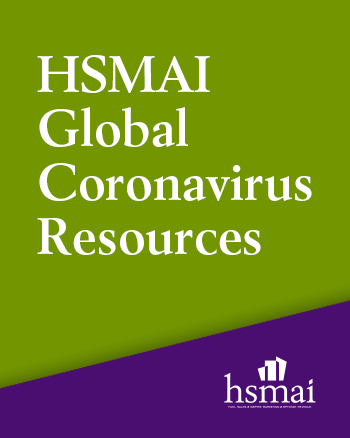By Timothy Wiersma, Founder and Principal, Revenue Generation LLC, and chair of HSMAI’s Revenue Optimization Advisory Board
 HSMAI’s Revenue Optimization Advisory Board (ROAB) met on a call May 7 to discuss further implications of the coronavirus, in particular how hotels are thinking about reopening. Here are a few takeaways from the discussion:
HSMAI’s Revenue Optimization Advisory Board (ROAB) met on a call May 7 to discuss further implications of the coronavirus, in particular how hotels are thinking about reopening. Here are a few takeaways from the discussion:
1. Reopening dates are moving targets. According to OTA Insight, right now Orlando only has 20 percent availability, but it is predicting that as of June 1, that will increase to 75 percent availability as hotels plan to open up more inventory. But even though many hotels may be planning for a June 1 reopening, that date could easily change, as targeted reopening dates have been constantly getting pushed out further.
“Two weeks ago, we saw a noticeable spike in the middle of May,” one ROAB member pointed out. “But now that spike has moved to June 1. It might be the reality that hotels could be reevaluating their situation about two weeks out.”
Another ROAB member confirmed that their hotels are on two-week evaluation periods, which has been a continuous cycle of evaluating and pushing the date out another two weeks. Another member said they had been targeting June 1 but have already decided to push their reopening date to mid-June or later. “I think it’s going to continue to get pushed back,” the member said. “Without group business, you’ve got to have leisure travel, which is limited by government and local municipality ordinances, which are getting pushed back. Our number-one priority is to get the hotels profitable as soon as possible.”
2. Many other factors limit opening ability. Some organizations have laid off as much as 95 percent of their workforce, which adds another level of difficulty in opening. “Even if the hotel is open in accordance to local legislation, that doesn’t mean they can operate in a normal fashion,” one ROAB member said. “The limiting factor isn’t necessarily having the rooms available, and maybe not even the new health and safety protocols, but it’s getting housekeepers. One property had all rooms available but maxed out at 25 rooms, because they only had 10 people at the hotel to service them.”
Local ordinances on opening as well as company policies can bring new challenges, both practically and monetarily. Some states and municipalities have limited the capacities that hotels can operate at, down to as much as 25 percent. Others have ruled that staff cannot clean a room for 24 hours after a guest has checked out, or now require a day or more between guest stays in a certain room, which limits inventory even further. “We’re having a hard time finding a model so that the hotel can work within local regulations and still be profitable,” one ROAB member said.
Hotels are also cleaning rooms more thoroughly and stocking up on personal protective equipment such as masks and sanitizer to provide to guests and staff, which one ROAB member estimated increases the cost of renting a room up by at least $30 dollars — more when it’s in a destination like the Caribbean where it is harder to procure PPE. “Maybe cleaning fees are the new resort fees,” one ROAB member said.
Even though operating costs are going up, customers are not expecting to have to eat that cost, one ROAB member said. “Keep in mind what our guests’ perception is,” the member said. “They might not be expecting deals, but they are certainly not expecting to be paying more n the current environment.
3. All of these factors affect pricing policies. Automated pricing systems have to be programed to understand changes such as not being able to rent out a room less than 24 hours after a guest has left. “I’m not going to say it’s easy to do,” said one ROAB member who has been dealing with this already in Asia. “But it’s manageable, because the transactional volume is so low right now, it makes it doable. When a reservation comes in, it gets blocked and assigned to a room, and it doesn’t get moved. Then there’s an out-of-order placed after that guest departure. You’ve got this new protocol that goes into room control that has to be very specific, and changes to the system have to be managed that way, too.”
One ROAB member suggested that there is an opportunity for additional revenue generation through extended stays. “I’m seeing a lot of success with extended-stay pricing, not just in extended-stay brands but also for brands not typically associated with extended stay, due to the demand we’re getting,” said the member, who added that in part this is because many frontline medical professionals and individuals quarantining are staying for longer than a week. “Our non-extended-stay brands are seeing extended-stay occupancy more than 40 percent, and the extended-stay brands are hitting 75-percent occupancy. Once we begin to recover and emerge out of this, there seems to be an appetite to figure out how to price more attractively for extended-stay customers.”
This group continues to dialogue on a regular basis and discuss their real struggles and successes as we all manage to find a way forward through this crisis. Please stay tuned as we continue to evolve our thinking and learn together on ways to recover.
For additional information, insights, and tools, visit HSMAI’s Global Coronavirus Resources page.
